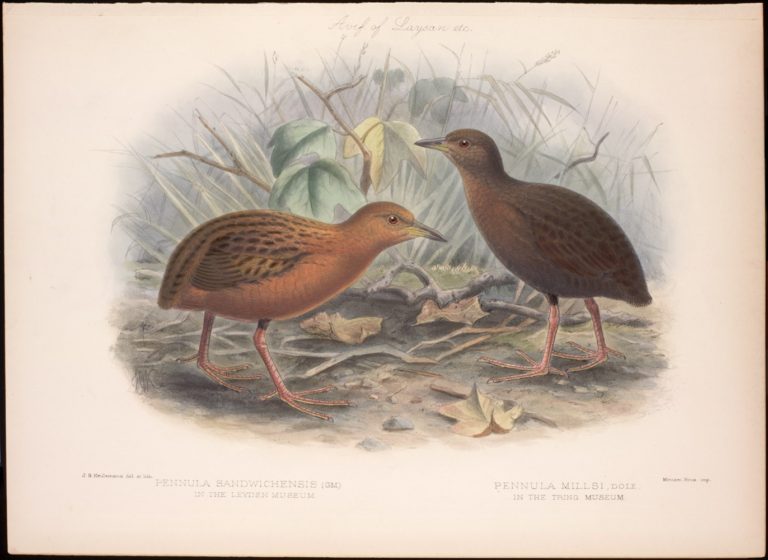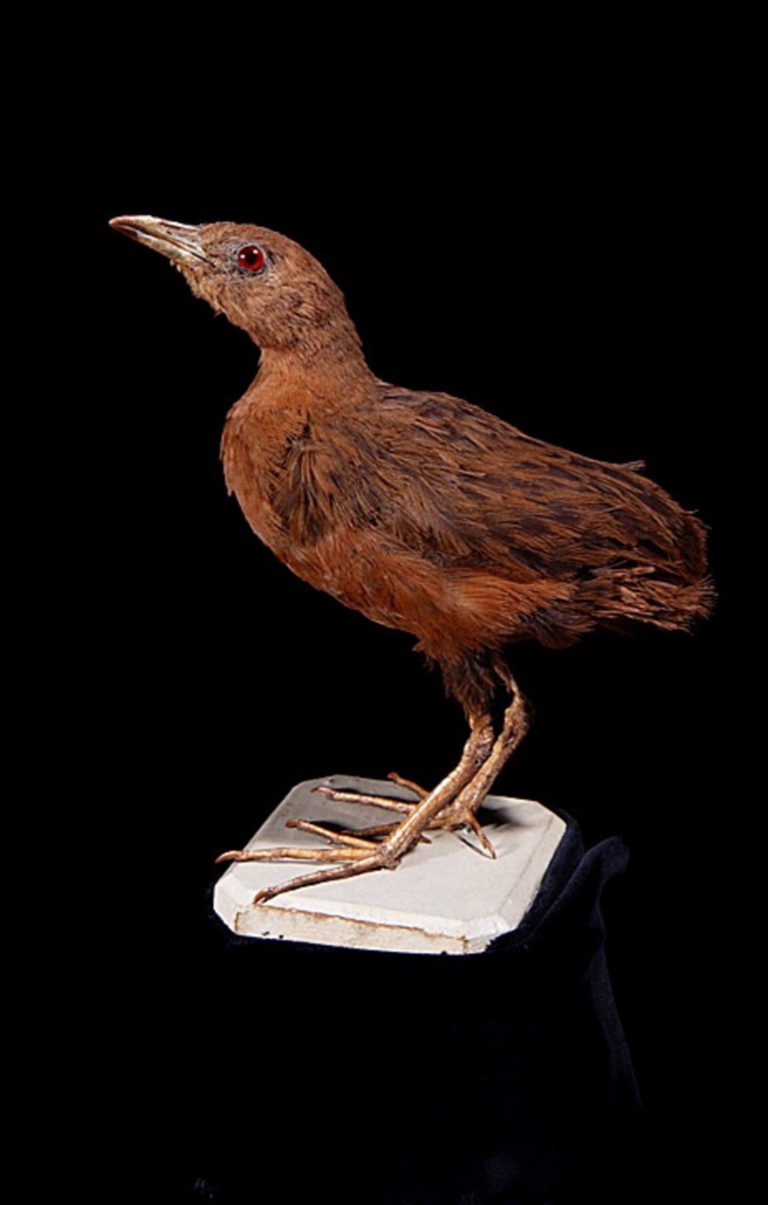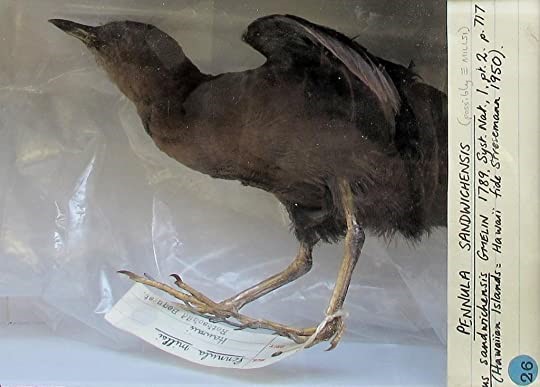Frontiers of Taxonomy: Did Two Flightless Rail Species Coexist on the Big Island?

Hawaiian Rail, Z. s. sandwichensis and millsi. John Gerrard Keulemans, 1900
The seven specimens assigned to the Hawaiian Rail (Zapornia sandwichensis) fall into two groups that differ by geography, coloration, and pattern. The two collected on the dry Kona side of the Big Island are rufescent and heavily marked (“Rusty Hawaiian Rail”, Z. s. sandwichensis), whereas the five collected on the wet Hilo side are dusky-gray-to-blackish-brown and unmarked (“Dusky Hawaiian Rail”, Z. s. millsi).
The two sets of specimens have been variously classified as: (1) two species; (2) two subspecies; or (3) adult and immature plumages of the same subspecies.
Based on the publicly available evidence, any of these candidate classifications could be correct—and it seems that at least one of them must be. Yet somehow each seems unlikely, because each explanation would be peculiar and overly coincidental in its own way.
Eventually tissue samples might be analyzed for genetic markers that would establish the relatedness of the Kona and Hilo birds. Until then, it seems best to provisionally maintain the subspecies status as a marker of their indeterminate differentness—and to use the names “Rusty” and “Dusky” to clearly denote their principal differences.
Upon their original descriptions to science, the Kona birds were classified as sandwichensis and the later-described Hilo birds as a separate species, millsi. In the ensuing decades when Hawaiian bird taxonomy was a contentious field, the Kona and Hilo birds were either considered separate species or divergent subspecies.
Nobody knew then whether the two groups had descended from the same initial colonization event—in fact, the theory of evolution was not yet widely understood. If they were known now to have resulted from different colonizations, most taxonomists would automatically regard them as separate species, whereas if both arose from a common colonist their species status would require further analysis.
Since the mid-1900s, however, the prevailing view has been that the two Kona birds are both immatures and the five Hilo birds are all adults, and that the apparent regional difference is just a coincidental sampling artifact. The theoretical underpinning of this view is that one island would be unlikely to support two similar species of small flightless rail—because that type of niche on a single island would rarely be capacious enough for two species to occupy it.

“Rusty Hawaiian Rail,” Z. s. sandwichensis, side view. (Specimen ID: RMNH.AVES.87450; Big Island, Hawaii.) © Naturalis Biodiversity Center
This perspective seems generally sensible, but might undervalue the possibility that for flightless rails the eastern and western slopes of the Big Island may have been, in effect, two islands—divided as they are by lava flows and other potential barriers to terrestrial dispersal.
Another possibility that may have been overlooked is that one flightless rail could have evolved first and specialized in a niche, then a second colonization could have occurred and the latter, flighted population could have taken a different ecological path, then eventually lost the power of flight. Subfossil remains indicate that at least five other flightless crakes inhabited the main Hawaiian Islands, but went extinct before Europeans arrived—so multiple colonizations occurred and remains of at least two species have been found on Maui (plus a third on Molokai, which was connected to Maui within the past 10,000 years).

“Dusky Hawaiian Rail,” Z. s. millsi. (Cat. BM 1939.12.9.553, Natural History Museum at Tring, U.K.) © Andrew Esposito
Judging only from the appearance of the surviving specimens, it is difficult to imagine that they were all the same species. Their colors and pattern are radically different, and the Kona birds (the putative immatures) seem to have larger bills. Without genetics and possibly other analytical fodder as yet unrevealed, there is no basis for a modern observer to conclude confidently upon an answer. But facially this case has the appearance of two similar species that coexisted on the Big Island.
Text © Russell Fraker / June 12, 2020